A Taste of Viennese Christmas
Recipe for Viennese Vanilla Crescents at the end!
Bathed in bright yellow that soaks in the summer sun, while offering a stark contrast to the snow come winter, Schönbrunn Palace in Vienna, Austria, always seems both welcoming and royal. Built in 1740-50s, the palace became the summer residence of the ruling family of the Austro-Hungarian Empire. Franz Joseph, Emperor of Austria and King of Hungary, was born here on August 18, 1830, and died here November 21, 1916. He was the last Austro-Hungarian emperor.
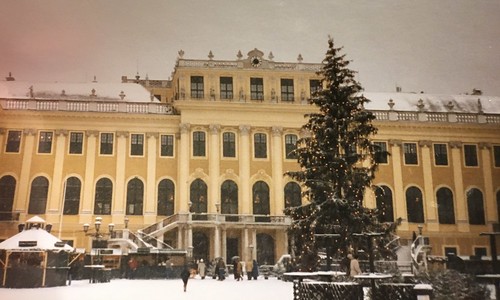
Christmas at Schonbrunn
While the tour of the 1,441-room Baroque palace is well worth the price (you'll only get to see a fraction of those rooms), I found walking the grounds much more satisfying. Open and free to the public, you can venture in and out of the expansive palace grounds and find something new each time you go.
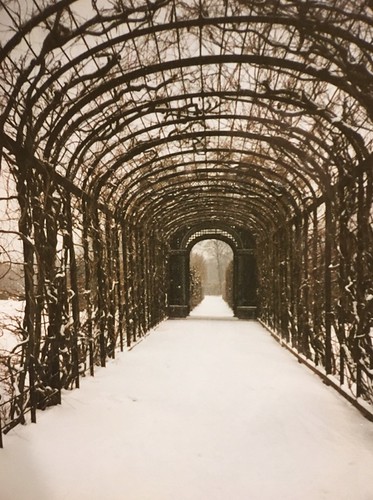
Tunnel at Schonbrunn
I went frequently as a college student studying in Vienna for a semester. My house frau lived in Schönbrunn, and every day I'd pass by the palace on my way to the train into the city. Often I'd circle through the grounds on my way home. To reach one of my prized spots – the Gloriette perched on a high above the palace - you'd have a decent climb up a hill. Many tourists didn't bother with the trek, choosing instead to take pictures of the columned stone sculpture from the gardens below. I often had the Gloriette all to myself and could look over Vienna spreading down below.
Each season brought a new sensibility to the Schönbrunn Palace grounds – spring brought colorful flowers adorning each of the carefully manicured gardens, sometimes spilling over into various fountains. Fall brought an array of orange, yellow, and red leaves that tunneled the pathways. But winter became my favorite.
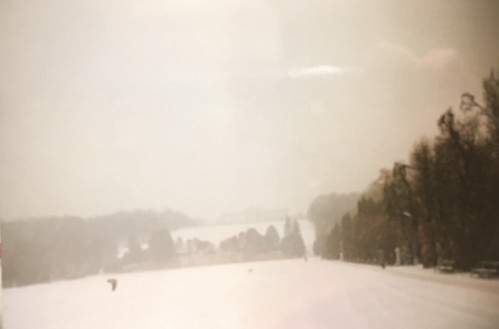
View of Schonbrunn in the snow
Walking among the fluffy snowflakes through the garden grounds the whole scene felt surreal. The sound seemed quieted in the snow – you could hear your boots crunching on the ground, but everything else was still.
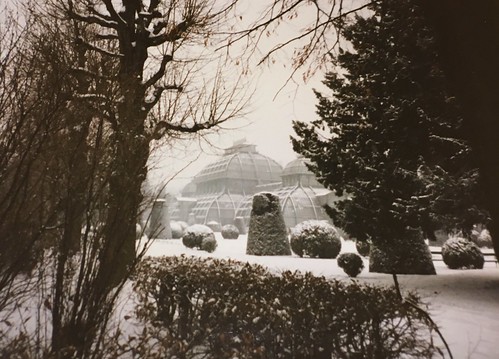
Snowy spot at Schonbrunn
Winter also brought the Christkindlmarkt, the Christmas markets that dotted many of Vienna's famed streets and historic sites including the grounds of Schönbrunn Palace and the Rathaus, or Vienna's City Hall.

Afternoon at Schonbrunn
While I'd sung about chestnuts roasting on an open fire, I'd never had them until I lived in Vienna. They sold them on street corners around Christmas, heating them on what looked like big, steel overturned trash cans. They also offered roasted potato wedges, my preference as the chestnuts had a chalky texture, while the potatoes were crisp on the outside and melty soft on the inside.
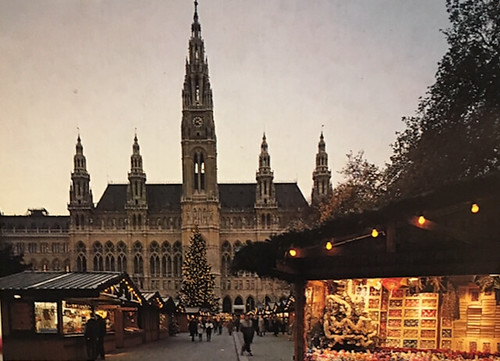
Christmas at Rathaus
Sweets and pastries abounded. Fruit-decked Linzer Tortes seemed to be for sale at every other stall at the Christmas Markets. Tree ornaments, wooden toys, candles, and other handmade gifts lined the stalls as well.
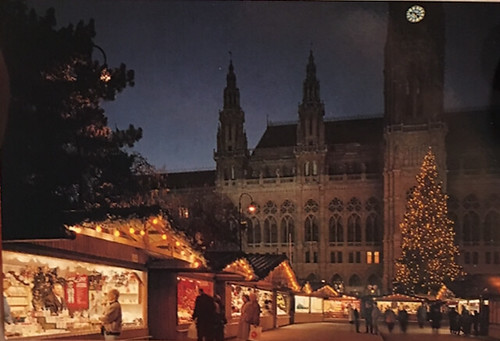
Christmas at Rathaus
Although it's been over 20 years since I walked into the Rathaus, packed with holiday visitors and vendors looking to sell their wares, I still remember the smell of fresh-baked crescent Christmas cookies. Dusted with powdery vanilla sugar, the cookies were thick with butter and had a distinct almond finish.
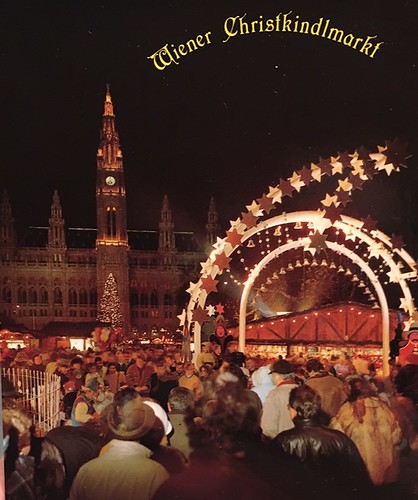
Christmas at Rathaus
You can make your own Viennese Crescent cookies (called Vanillekipferl) at home. The simple dough has only a few ingredients. I tend to spike mine with a few extras, like almond extract to punch up the nutty flavor and citrus zest for a bit of a zing. One quintessential ingredient – vanilla sugar – can be tough to come by. You can find it at cooking specialty shops or make your own (I bought mine from Savory Spice). An authentic recipe will tell you to strip the vanilla bean and then pulse it with sugar. I rarely have vanilla beans on hand so the other option is to place a few drops of liquid vanilla extra into a food processor with sugar and blend until fine. Still another option is to dust them liberally with powdered sugar.
I'd suggest picking out favorite Christmas carols to watch on YouTube while eating a plateful of these buttery cookies.
Viennese Vanilla Crescents Recipe
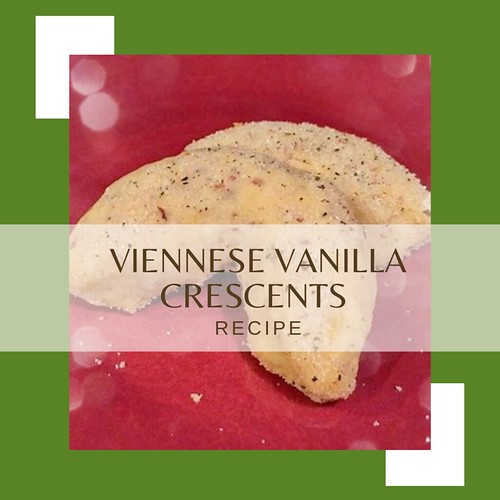
Yield: 2 dozen
Ingredients
2 cups flour
1 cup ground almonds*
¼ tsp. salt
1 cup butter, softened, but still cool to the touch
¾ cup powdered sugar
½ tsp. vanilla
1 large egg yolk
½ tsp. orange or lemon zest (or both!)
¼ tsp. nutmeg
½ tsp. cinnamon
Optional topping:
Powdered sugar
Vanilla sugar
Directions
1. In one bowl, stir together flour, ground almonds, and salt.
2. In another bowl, blend butter until creamy, using a hand mixer. Add in powdered sugar, zest, and spices.
3. Slowly add flour mixture into butter mixture; blend until just combined.
4. Knead lightly together and then place into plastic wrap and form into a disc; place into the refrigerator for at least an hour or overnight.
5. Line baking pans with parchment paper.
6. Preheat the oven to 350 degrees Fahrenheit.
7. Working with half of the dough at a time, roll the dough. Cut into 3" pieces and then pinch on the ends.**
8. Place onto the pan and bake for 10 minutes or until just browned on the edges.
9. While still warm, place each cookie in the vanilla sugar.
*Blend almond slivers in food processor until fine.
**If you're short on time, another option is to roll the dough into balls as opposed to the traditional crescents.
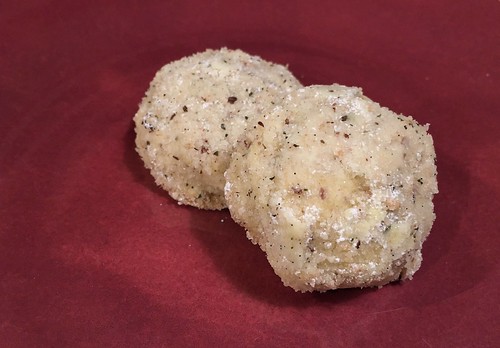
Kristen J. Gough is the Global Cuisines & Kids Editor for Wandering Educators.
All photos courtesy and copyright Kristen J. Gough
This article was originally published in 2017 and updated in 2023.




















